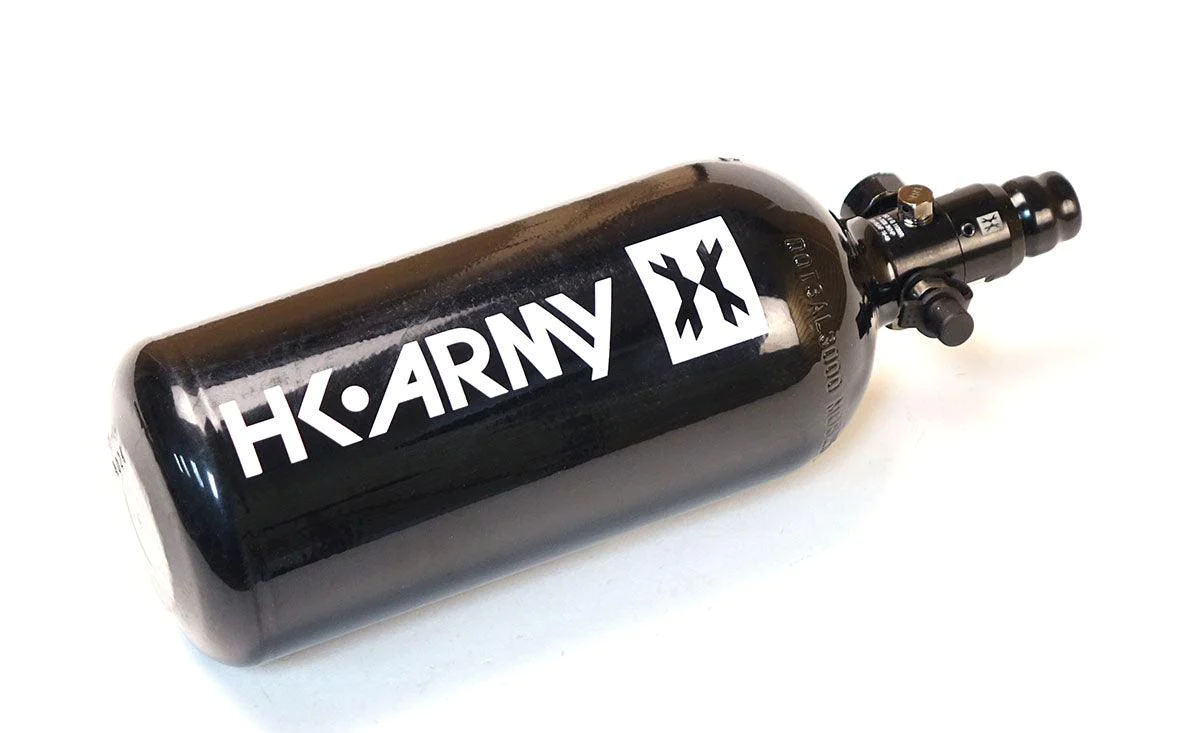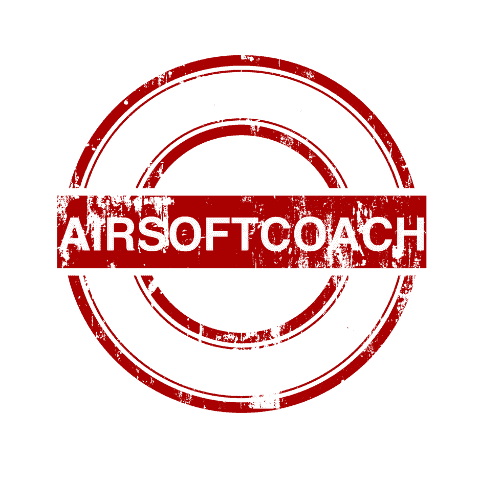
Airsoft is a popular sport that simulates military combat scenarios using replica firearms that shoot plastic pellets, called BBs. As a beginner, you may encounter various types of airsoft guns and systems, such as spring-powered, electric-powered (AEG), and gas-powered.
One advanced and customizable option in the airsoft world is the High-Pressure Air (HPA) system. This article will provide an in-depth overview of the HPA system, its components, and benefits to help you understand this innovative technology.
What is HPA in Airsoft?
High-Pressure Air (HPA) systems are a type of pneumatic technology used in airsoft guns to propel BBs by releasing compressed air. HPA systems are powered by external air tanks filled with compressed air, typically stored at pressures of 3,000 to 4,500 pounds per square inch (PSI).
The air from the tank is regulated, providing consistent and precise control over the gun’s performance. HPA systems are often associated with high levels of customization, performance, and consistency.
How Does An HPA Airsoft Gun Work?
Understanding the mechanics of an HPA airsoft gun can help you appreciate its performance and capabilities. The HPA system replaces the traditional power sources (spring, electric, or gas) with a pneumatic system that uses compressed air from an external air tank.
An HPA airsoft gun operates by using compressed air from an external air tank, regulating the air pressure, and releasing the regulated air into the HPA engine to propel the BB when the trigger is pulled. The HPA engine’s design determines the specific mechanics and features of the airsoft gun, such as programmable fire modes, rate of fire, and adjustable FPS.
Components of HPA Systems
There are several components that make up an HPA system for an airsoft gun to work and they are as follows:
Air Tank
The air tank is the primary component of an HPA system, responsible for holding compressed air. Tanks come in various materials, sizes, and capacities.
The most common materials are aluminum, carbon fiber, or a combination of both, known as carbon fiber-wrapped tanks. Carbon fiber tanks are lighter and can hold higher pressure levels, but they are also more expensive.
The capacity of air tanks is measured in cubic inches (CI) and ranges from 13 CI to 90 CI, with the larger tanks holding more air. The tank’s pressure rating, measured in PSI, is another crucial factor to consider, as it determines the amount of compressed air the tank can hold.
Regulator
The regulator is an essential component of an HPA system, as it controls the air pressure from the tank to the airsoft gun. The regulator reduces the high pressure from the air tank to a lower, more manageable pressure for the airsoft gun to use. This component is crucial in maintaining a consistent FPS (feet per second) output, ensuring accurate shots.
There are two types of regulators: primary and secondary. The primary regulator is attached directly to the air tank and provides the first stage of pressure reduction. The secondary regulator, if present, is typically installed closer to the gun and offers finer control of the air pressure.
Air Line
The air line is a hose connecting the air tank to the airsoft gun. These lines are typically made of braided material and are designed to handle high pressure. They come in various lengths and colors, allowing players to customize their setup.
HPA Engine or Drop-In Kit
The HPA engine, also known as a drop-in kit, replaces the original power source of the airsoft gun (spring, AEG gearbox, or gas system) with the HPA system. There are several HPA engines available on the market, each with its unique features and compatibility with different airsoft gun models. HPA engines can be classified into three main types:
- Electro-pneumatic engines: Controlled by a solenoid and an electronic control board, these engines offer advanced features such as programmable fire modes, rate of fire, and adjustable FPS. Examples include PolarStar Fusion Engine and Wolverine Inferno.
- Mechanical-pneumatic engines: These engines rely solely on mechanical components and do not have electronic controls. They are simpler, more reliable, and generally more affordable. Examples include Wolverine Wraith and Redline N7.
- Hybrid engines: These engines combine the benefits of electro-pneumatic and mechanical-pneumatic systems, offering the best of both worlds. Examples include the PolarStar Kythera and Wolverine MTW.
Benefits of HPA Systems in Airsoft
High-Pressure Air (HPA) systems in airsoft offer unmatched performance and customization, elevating a player’s gaming experience. HPA-powered airsoft guns boast unparalleled consistency, precision, adaptability, and reliability, allowing enthusiasts to fine-tune their weapons for optimal performance.
These benefits make HPA systems an increasingly popular choice among airsoft players seeking a competitive edge.
Consistency and Precision
One of the main advantages of HPA systems is their unparalleled consistency in performance. The regulated air pressure ensures a stable FPS output, translating to more accurate shots. This consistency is especially beneficial in competitive airsoft games, where precision is key.
Customizability
HPA systems offer extensive customization options, allowing players to fine-tune their airsoft guns’ performance to suit their playstyle and preferences. With HPA engines, users can adjust the rate of fire, trigger response, and FPS, among other parameters. Additionally, the availability of various air tank sizes and air line lengths enables players to create a personalized setup.
Adaptability
HPA systems can be adapted to a wide range of airsoft guns, including rifles, pistols, and sniper rifles. This versatility makes HPA systems an attractive option for players who want to upgrade their existing airsoft guns or build a custom platform from scratch.
Reliability
HPA systems are known for their reliability, as they have fewer moving parts than their AEG or gas-powered counterparts. This reduced complexity results in lower maintenance requirements and fewer potential points of failure.
Additionally, HPA systems are not affected by temperature fluctuations, ensuring consistent performance in various weather conditions.
Efficiency
HPA systems are energy-efficient, as they use only the amount of air necessary for each shot. This efficiency results in longer-lasting air tanks and less frequent refills, allowing players to focus on the game without worrying about running out of air.
Challenges and Considerations of HPA Systems
While High-Pressure Air (HPA) systems in airsoft provide numerous advantages, they also present challenges and considerations. The initial cost, air tank refills, weight and mobility concerns, and potential negative perceptions at some airsoft fields are important factors to weigh.
Initial Cost
One of the primary challenges associated with HPA systems is their relatively high initial cost. The air tank, regulator, air line, and HPA engine can be expensive, especially when compared to spring or entry-level AEG airsoft guns. However, the long-term benefits of HPA systems, such as improved performance, reliability, and customization, may justify the investment for many players.
Air Tank Refills
HPA systems require periodic air tank refills, which may not be readily available at all airsoft fields or local shops. It is essential to research refill options in your area and plan accordingly. Some players invest in personal air compressors or scuba tanks to refill their HPA tanks at home.
Weight and Mobility
Air tanks, particularly larger ones, can be heavy and cumbersome, impacting a player’s mobility on the field. Smaller tanks are more portable but may require more frequent refills. It is crucial to find the right balance between tank size, weight, and playstyle.
Perception and Field Rules
Some airsoft players and fields may have negative perceptions of HPA systems, often due to concerns about potential misuse or cheating. It is essential to familiarize yourself with the rules and regulations of your local airsoft field regarding HPA systems and adhere to them strictly.
How To Fill An Airsoft HPA Tank
To fill an HPA tank, first locate a suitable air source, such as an airsoft field, scuba or paintball shop, personal air compressor, or scuba tank with an adapter.
Inspect the HPA tank for damage or defects and ensure it is within its hydrostatic test date. Remove the tank’s protective cap, exposing the fill nipple. Attach the fill hose from the air source to the tank’s fill nipple, ensuring a secure, leak-free connection.
Gradually open the air source valve and fill the tank while monitoring the pressure gauge. Avoid exceeding the tank’s maximum pressure rating. Once filled, close the air source valve, release any residual pressure in the fill hose, and disconnect the hose from the fill nipple.
Lastly, check for leaks around the tank’s valve and connections, addressing any issues before use. Following these steps will ensure safe and effective filling of your HPA tank for optimal airsoft performance.
Conclusion
HPA systems in airsoft provide numerous benefits, including consistency, precision, customizability, adaptability, and reliability. While they may have a higher initial cost and require air tank refills, these systems can significantly enhance a player’s performance and enjoyment of the sport.
As a beginner, understanding the components and advantages of HPA systems can help you make an informed decision when selecting the right airsoft setup for your needs.

